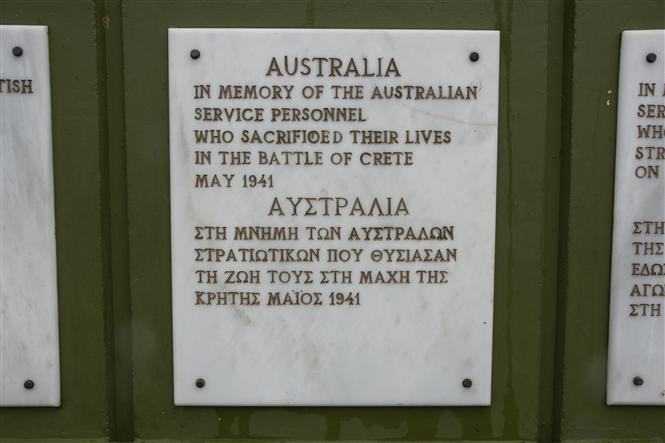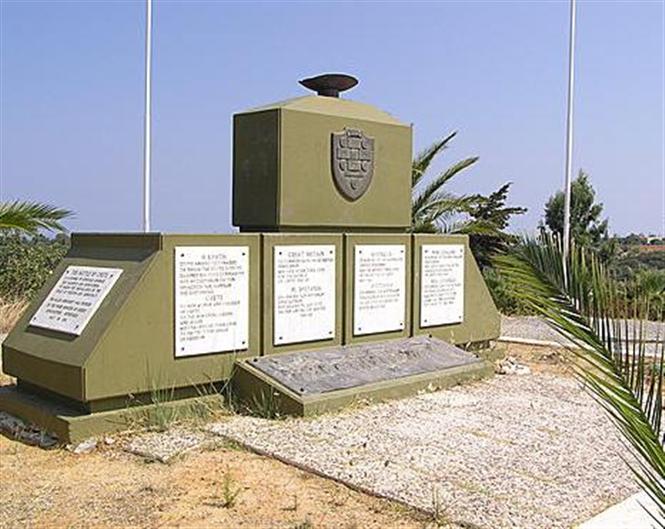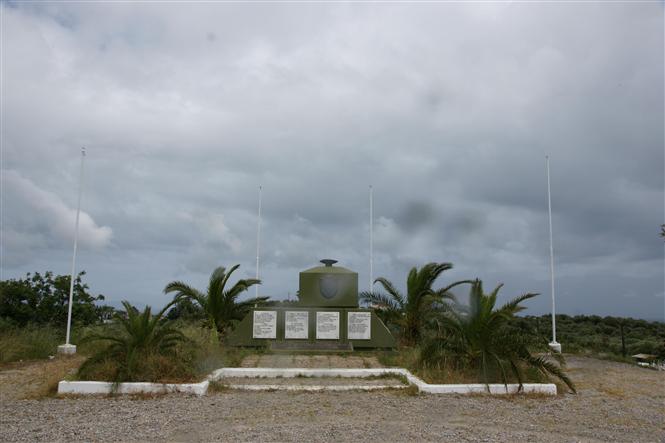Galatas Memorial
Description
Also known as the Battle for Crete Memorial: a concrete monument with plaques commemorating each of the nationalities who served as part of the Allied forces in this battle.
History
Crete was desirable to both the British and the Germans. The islands central position in the Aegean had great strategic importance and Suda Bay was an ideal base for naval operations. After Italy invaded Greece, Britain occupied Crete and though it was generally accepted that the island would be attacked by the Germans, General Archibald Wavell, Commander-in-Chief of the Middle East, was unable to commit more troops to the island due to difficulties in North Africa, leaving it ill-equipped and insufficiently defended.
The Germans attacked Crete on 20 May 1941 with the largest airborne attack using paratroops of the Second World War. ‘Operation Merkur’ divided the island into four drop zones, the airfield at Máleme to allow for reinforcements, the island's capital, Chania, and the towns and airfields of Rethymnon and Heráklion. The Germans attacked in two waves, jumping directly onto their objectives, incurring heavy casualties, their parachutes easy targets for the riflemen below. By day's end, the Germans had not had the success they expected and had suffered far greater losses than anticipated. Only at the western end of Máleme airfield did the paratroops manage to find cover and set up a viable base. Concentrating all the remaining paratroopers there, by 21 May, they had the airfield in their possession and supplies and reinforcements poured in. The hills around Galatas, Pink Hill in particular, became the battleground of some of the most bitter and critical fighting on Crete. The loss of this vital high ground would mean the inevitable loss of Chania and Suda Bay. Defended by mostly New Zealand and Cretan forces comprised of various composite formations of dismounted drivers, gunners and other non-infantry personnel, Pink Hill was attacked several times, each attack repulsed, but by the third day German soldiers had captured Pink Hill and subsequently Chania.The bombardment of the towns of Crete went on. The resolute and unexpected resistance of the defenders infuriated the Germans who resorted to brutal reprisals: mass executions, arson, and other serious destruction. The Allied forces, however, continued their tenacious defence of Rethymnon and Heraklion, but victories elsewhere on Crete allowed the Germans to concentrate their forces on these towns. Overwhelmed by the greater firepower of the Germans, their total command of the air and reinforcement of elite troops, Crete was lost and on 27 May General Wavell gave the order to withdraw. By 31 May the total occupation of Crete was a fact and the withdrawal of the majority of the Allied forces to Egypt marked the end of the Battle of Crete.
The memorial remembers Australian, New Zealand, British, Greek and Cretan fighters and the kindred spirit forged between Allies as each fought, side-by-side, against the German Paratroops in one of the most intensely fought battles of the Second World War.
Construction Information
Funded and constructed by the Greek Government.
Location
Galatas, Greece.
The memorial is situated on a hill south of Galatas.




